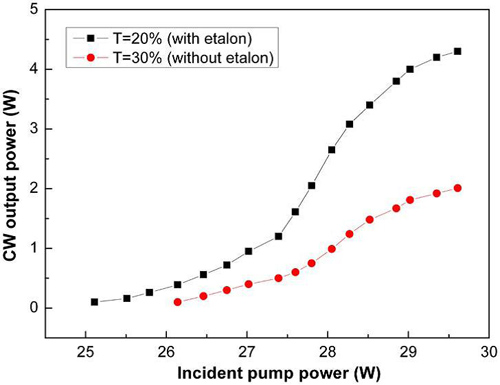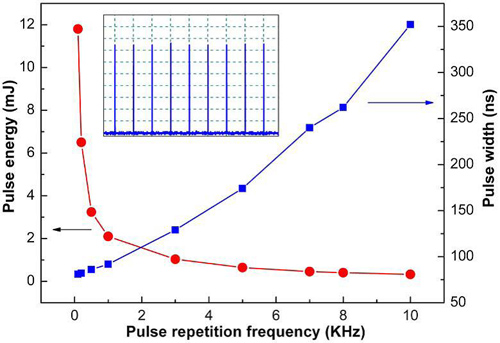High-pulse energy laser sources operating in the eye-safe atmospheric transmission window wavelengths (1400 to 1700 nm) have a range of applications in lidar and remote monitoring. However, due to the high methane absorption at 1645 nm with a typical value of 0.1 km?1 in the atmosphere, the 1617 nm laser, which is free of absorption, is more promising than 1645 nm. Additionally, the fiber laser sources are usually pumped around 976 nm; hence, the overall efficiency for the whole systems is significantly limited.
Recently, researchers from Prof. Chen Weibiao and Prof. Fan Dianyuan’s group at Shanghai Institute of Optics and Fine Mechanics, Chinese Academy of Sciences(SIOM, CAS) reported a high-energy Er:YAG lasers at 1617 nm resonantly pumped by a 1532 nm fibercoupled LD.
A low Er3+-doped of 0.25 at.% Er:YAG crystal rod was used as the gain medium to minimize energy transfer upconversion (ETU) and reabsorption at 1617 nm. A maximum CW output power of 4.3 W at 1617 nm was achieved under a 29.7 W incident pump power, corresponding to an optical–optical efficiency of 14%; this is the highest optical conversion efficiency with directly diode-pumped up to now. In Q-switched operation, they obtained a pulse energy of 11.8 mJ at 100 Hz PRF with a pulse duration of 81 ns, this energy is currently considered the highest pulse energy reported for a directly diode-pumped Q-switched Er:YAG laser. They also obtained a 2 W CW output power without etalons at room temperature using an output coupler of 30% transmission.
This work has been published on Optics Letters, 37(16), 2012.
This work is supported by the Chinese Academy of Sciences Innovation Fund under Grant No. CXJJ-10-M50.

Fig. 1. CW output power of Er:YAG laser at 1617 nm versus the incident pump power with different output couplers.

Fig. 2. Pulse energy and pulse width versus PRF in Q-switched operation. Inset: Oscilloscope traces of a Q-switched pulse train at 100 Hz PRF.